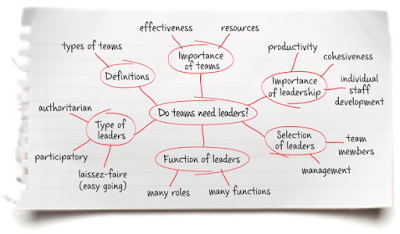1.7 Mindmapping
Mindmaps are extremely useful tools that can help sort and organise information in our heads to allow for clear, well-structured work that achieves its objectives. While not a necessary tool by any means, it is worth experimenting with to see if it help you as an individual. Both paid and free mindmapping software is available for almost every desktop and mobile operating system but do not underestimate the utility of the simple pen-and-paper method either.
A mindmap can help clarify both the question itself and your initial thoughts before you begin any reading or writing. Clarifying even seemingly simple questions can help, highlighting key words and terms to establish context, using word associations to see links with relevant issues and grouping together related points to see the beginnings of a structure.
The example images below (from RMIT University) shows a two-stage process for this. The first stage is the initial brainstorming exercise, where you may wish to simple list all ideas, points and issues that come to mind when looking at the question. In this case, the example question of "Do teams need leaders?" prompts a range of different thoughts, some are further questions, some individual points and other just relevant ideas. At this stage, just getting everything down on paper is key.

Once this is done however, you will want to apply some organisation to the ideas you've collected in order to organise your own thoughts on the question. A mindmap will now become very useful. Starting with a central point, in this case the essay question or title, you can start branching off to smaller points with everything clustered thematically.
In the example below, the essay question of "Do teams needs leaders?" leads to the sub-point of "Types of leaders" which then leads to three different types, authoritarian, participatory and laissez-faire, grouping together and developing these categorisations from the initial idea in the brainstorming section.

The aim of clustering points together in this manner is two-fold. Firstly, it can help organise your own thoughts and allow you to see connections between specific issues or ideas, thus helping to strengthen the eventual structure of your essay. Secondly, it can also help to identify weak areas or underdeveloped themes that you might otherwise overlook or miss, it can also help push your thinking further on a particular points and therefore help develop the content, as well as the organisation, of your essay.